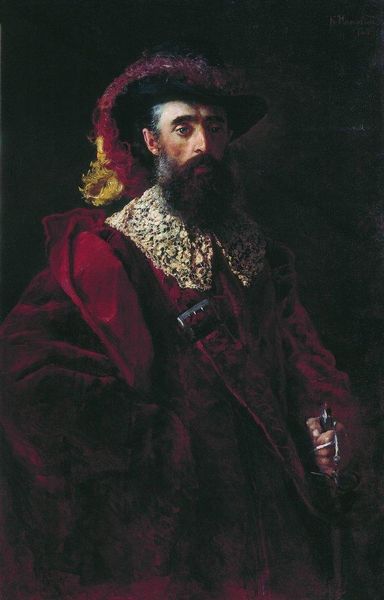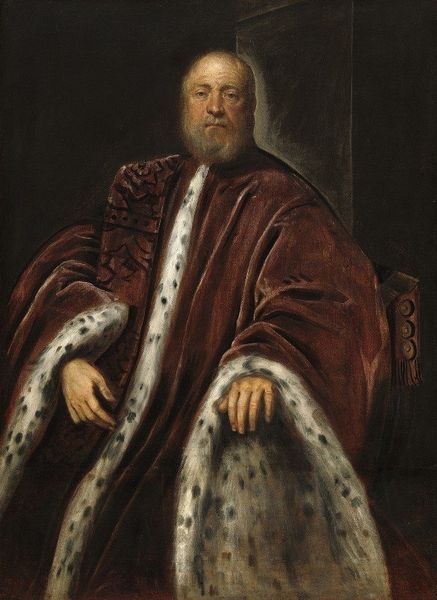
painting, oil-paint
#
portrait
#
painting
#
oil-paint
#
oil painting
#
male-portraits
#
history-painting
#
academic-art
#
realism
Copyright: Public domain
Editor: This is Jan Matejko’s *Portrait of Stanisław Tarnowski*, painted in 1890 using oil on canvas. It's striking how the texture of his opulent robes and the detail of the mace convey such power. What aspects of this piece stand out to you? Curator: I'm immediately drawn to the *labor* involved in creating such a portrait. Think about the process: from acquiring pigments and preparing the canvas to the sheer amount of time spent applying paint to render these minute details. This wasn't just about representing Tarnowski; it was a display of artistic skill as a commodity. What does it say about the value placed on representation and the *materials* of power during this era? Editor: So, you're saying the very act of creating this detailed likeness reflects something about the economic and social structures of the time? Curator: Exactly. The painting itself becomes a document of production and consumption. The materials – the pigments, the canvas, the fur – speak to access and privilege. And what about the artist’s labour? Matejko was a renowned artist. How does this portrait serve not only as an image of Tarnowski, but as a branding exercise for Matejko's studio itself? Consider the socio-economic relationship at play, the patronage system. Editor: I see. It’s almost like the painting becomes a commodity showcasing both the subject's status and the artist’s skill. Something beyond just artistic skill then, really revealing access to resources... Curator: Precisely! Think too about who would have had access to view it originally – this was not a publicly accessible image in the modern sense, raising questions about class and modes of viewership in 19th century Poland. So this portrait becomes an object of labour, prestige, and consumption wrapped into one. What a fascinating window into that society, wouldn't you agree? Editor: Definitely. It completely shifts how I view the piece, moving beyond just admiring the aesthetic to considering the social context of its creation and consumption. Thanks!
Comments
No comments
Be the first to comment and join the conversation on the ultimate creative platform.













